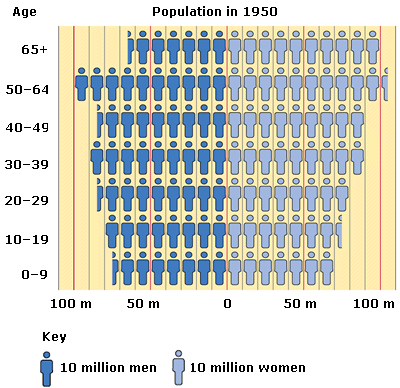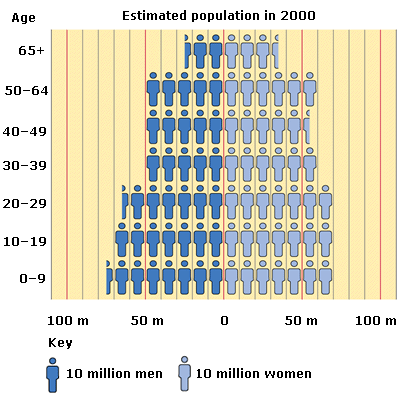Demographic change has been dramatic in recent years. Changes include
rapid population growth, migration from rural areas to cities, a rise in the
number of elderly people, and the developing role of women. All these changes
have increased stress levels.
Increasing urbanization
The most stressful change in recent decades has been rapid
urbanization. In some industrialized countries, such as the Netherlands and
Germany, more than 80 per cent of the population lives in cities. Stress arises
from cramped living conditions, the proximity of millions of other people, and
high levels of crime, noise, and air pollution.
Population increase
It took thousands of years before our planet boasted one billion
people. Now the population increases by over one billion per decade.

Ageing populations
Life expectancy is increasing – people live longer than ever
before. This is due to better diet and a rapid improvement in medical knowledge
over the past 200 years. The fall in the birth rate (especially in urban areas)
means that the world’s industrial nations now have an ageing population
– an increasing proportion of over-60s. On an individual level, this may
be stressful when there is conflict between career plans and long-term care for
ageing relatives. The cost to society is also increasing as healthcare costs
continue to spiral.
Changes in world population
The charts here show how the average age of the
world’s population changed in a 50-year period. From 1950 to 2000, the
population pyramid turns upside down, ending up with the largest slice of the
population aged between 50 and 64 years instead of under the age of 30.


Changing gender roles
The role of women has changed dramatically over the past 100 years,
especially in urban societies. As women make up a greater part of the total
labour force, they are judged by the same criteria and put under the same
stresses as men. However, women often suffer more stress than their male
colleagues because of conflict between work outside the home and work within
the home, where they may continue to shoulder the main responsibility for
traditional female roles. These changing roles also challenge male identity and
work patterns as women take on jobs traditionally held by men.
TIP
Use travel time to plan your day or switch off – not to do extra work.
TIP
Spend an hour or two alone each week, away from work and
family.